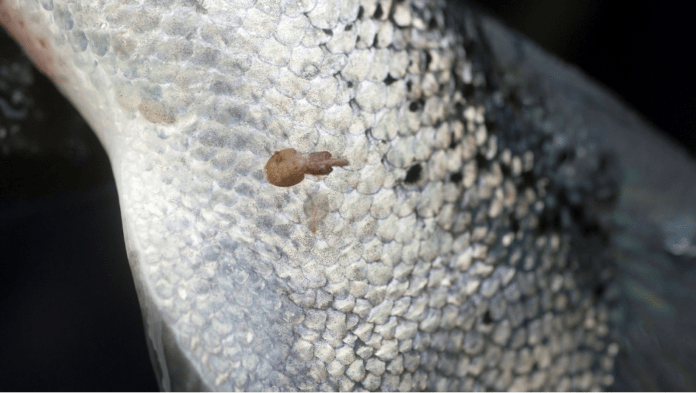A new study has examined measures to reducce salmon lice infestations to acceptable levels.
A recent study published in the International Journal for Parasitology examines the impact of coordinated salmon louse control strategies on reducing the effects of salmon farming on wild salmon populations.
Conducted by researchers Leif Christian Stige, Peder A. Jansen, and Kari O. Helgesen, the study used scenario simulations to explore different control strategies within Norway’s aquaculture sector.
Here are five key take aways from the study:
- Coordinated Efforts Reduce Lice: Implementing coordinated production cycles and fallowing (resting periods for pens) across regional salmon farms can significantly reduce the overall abundance of salmon lice, demonstrating an effective strategy to manage infestation levels.
- Challenges in the Second Year: Despite initial success, the study found that salmon lice problems tend to increase in the second year of the production cycle, particularly when farms are densely stocked and closely timed.
- Effective Density Management: The most effective method to reduce the impact on wild salmon populations involves decreasing the density of farmed salmon in open cages, particularly during the spring when lice levels peak. This can be achieved by either introducing larger fish that can be harvested sooner or reducing overall fish numbers.
- Technology and Limitations: While louse skirts and other barrier technologies that stop 50% of external larvae from entering cages provide some control, they are insufficient alone to reduce lice to levels that do not impact wild salmon. These technologies need to be part of a broader integrated pest management strategy.
- Implications for Policy and Management: The study highlights the importance of adopting regional and coordinated approaches to pest management in aquaculture, which could be guided by systems like the “traffic light” system used in Norway to regulate farm biomass based on lice-induced mortality rates of wild salmon. This approach helps ensure that aquaculture growth does not adversely affect native salmonid populations.
How does Norway’s traffic light system for salmon farming work?

